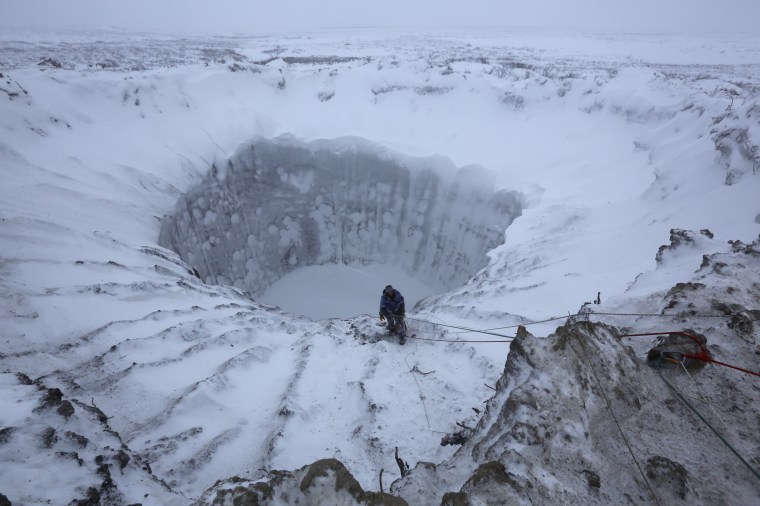MOSCOW — Russian scientists setting out to study a gigantic crater that appeared in Siberia last year had to hitch a ride due to academic budget cuts.
"Due to our modest budgets, we had to travel with another expedition passing by the craters en route to a scientific station on Bely Island," geologist Vasily Bogoyalensky of the Russian Academy of Sciences told NBC News.
Stormy weather also impeded the four-person expedition on the Arctic Yamal Peninsula, said Bogoyavlensky, who supervised and coordinated the expedition.
Further shrunk by the recent sanctions-sparked economic crisis, Russia’s scant academic budgets leave little money for trips to remote corners of the world, even for major international mysteries like the colossal sinkholes that were first reported last year.
The best-known sinkhole measures almost 85 feet in inside diameter and is 160-feet deep — enough to fit a 15-story building in between its uncannily straight walls of ice. The mysterious sinkholes have promptly generated a slew of theories about their appearance.
The real culprit appeared to be a gas blowout, or so the scientific consensus runs. This does not solve the entire riddle, however. The million-dollar question is — what caused gas to explode, and why now?

Global warming could have played a role, sapping the permafrost that contains methane in the ground, Marina Leibman, a permafrost expert with the Russian Academy of Sciences, told Gazeta.ru news website last fall.
According to Bogoyavlensky, the sinkholes may be far older than they appear — but it's possible nobody noticed them before. His team plans to return to Siberia this summer.
Explosions similar to those that created the craters were described in the Soviet Union as early as 1959, said the researcher, who is also deputy director of the Oil and Gas Research Institute in Moscow.
He said the blowouts were caused by gas coming to surface from several hundred yards to several miles deep underground.